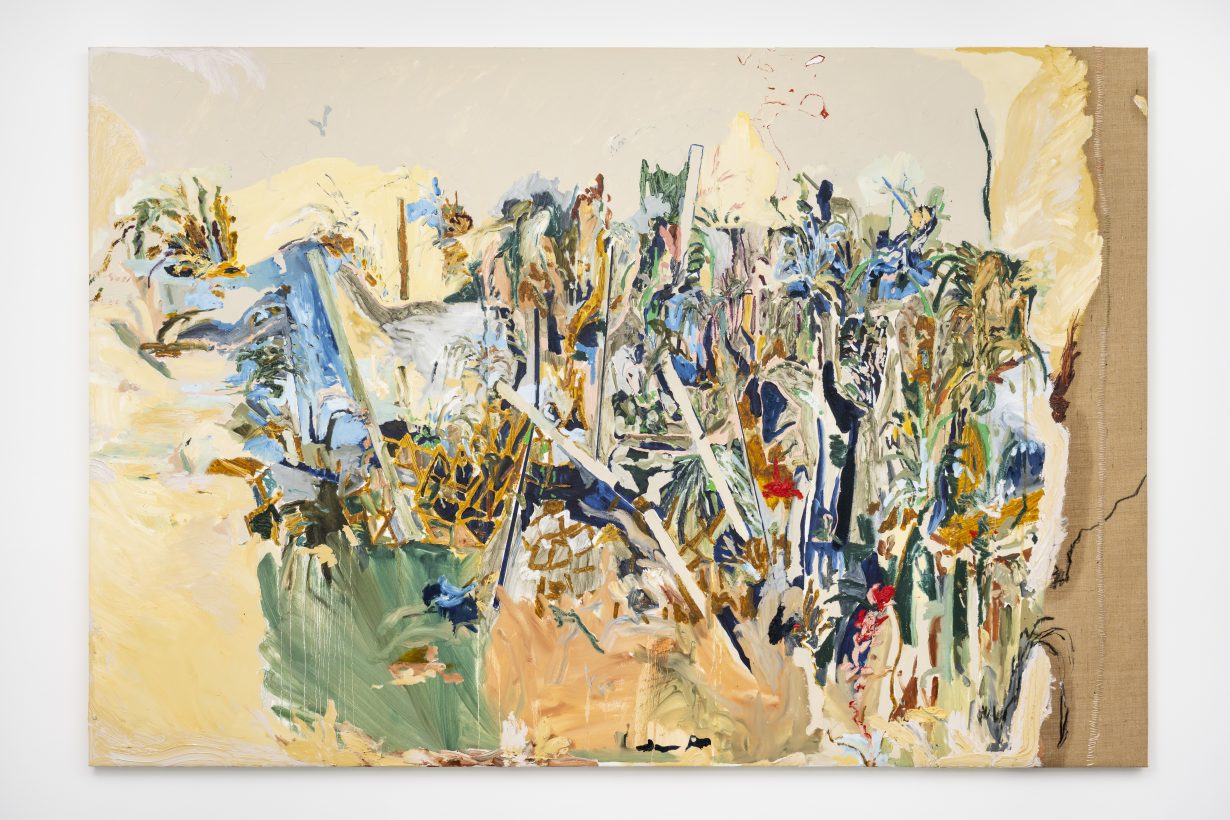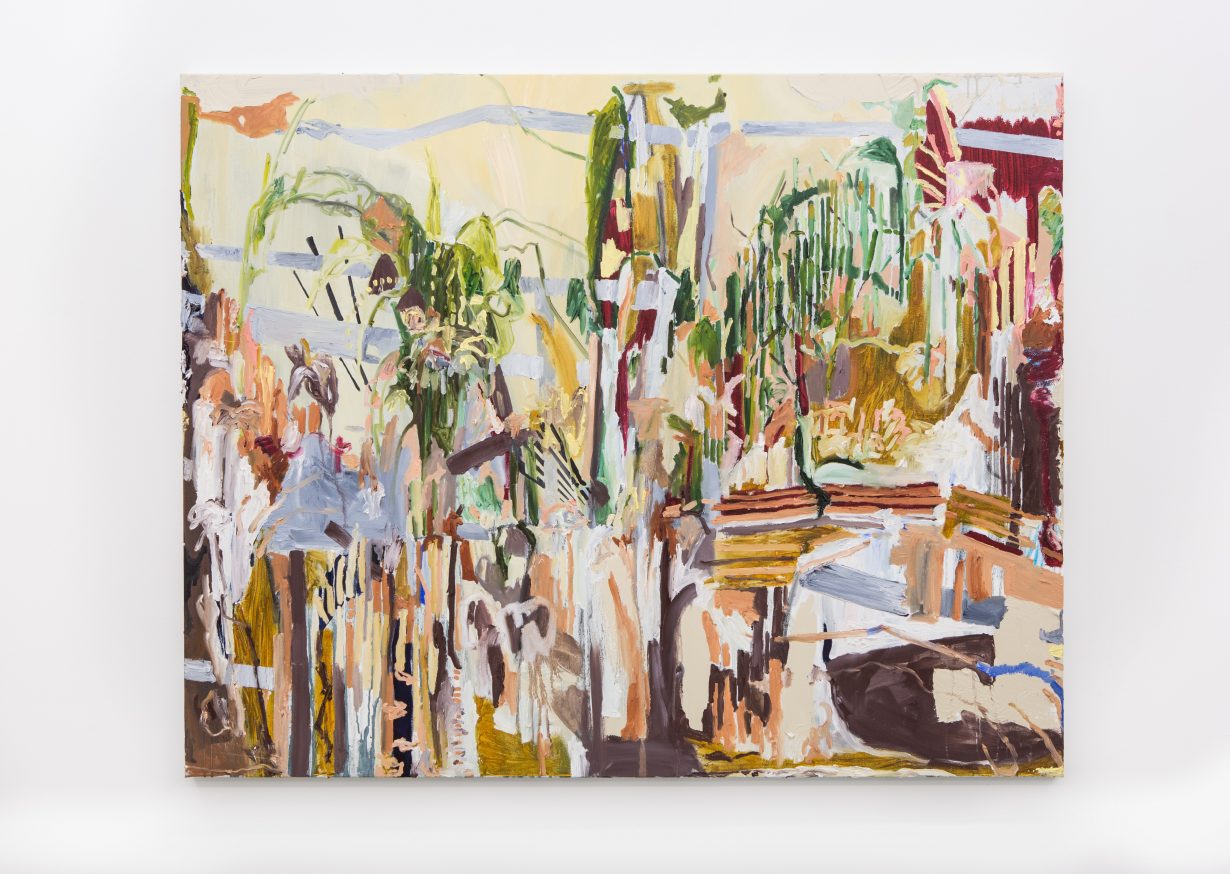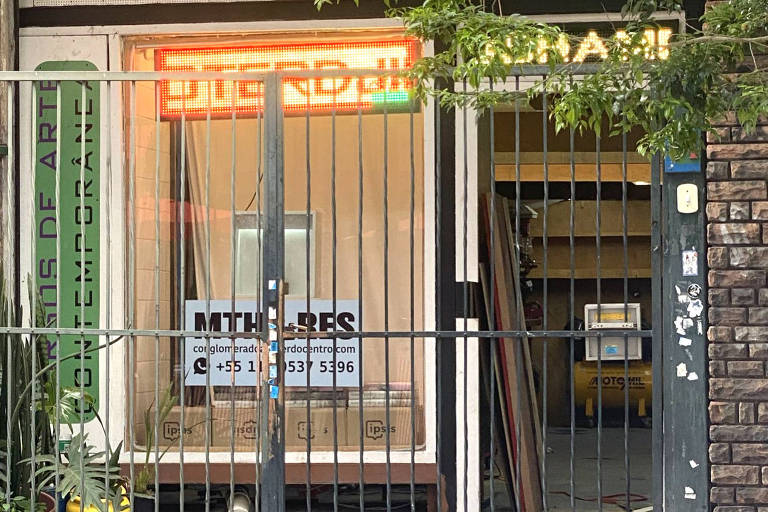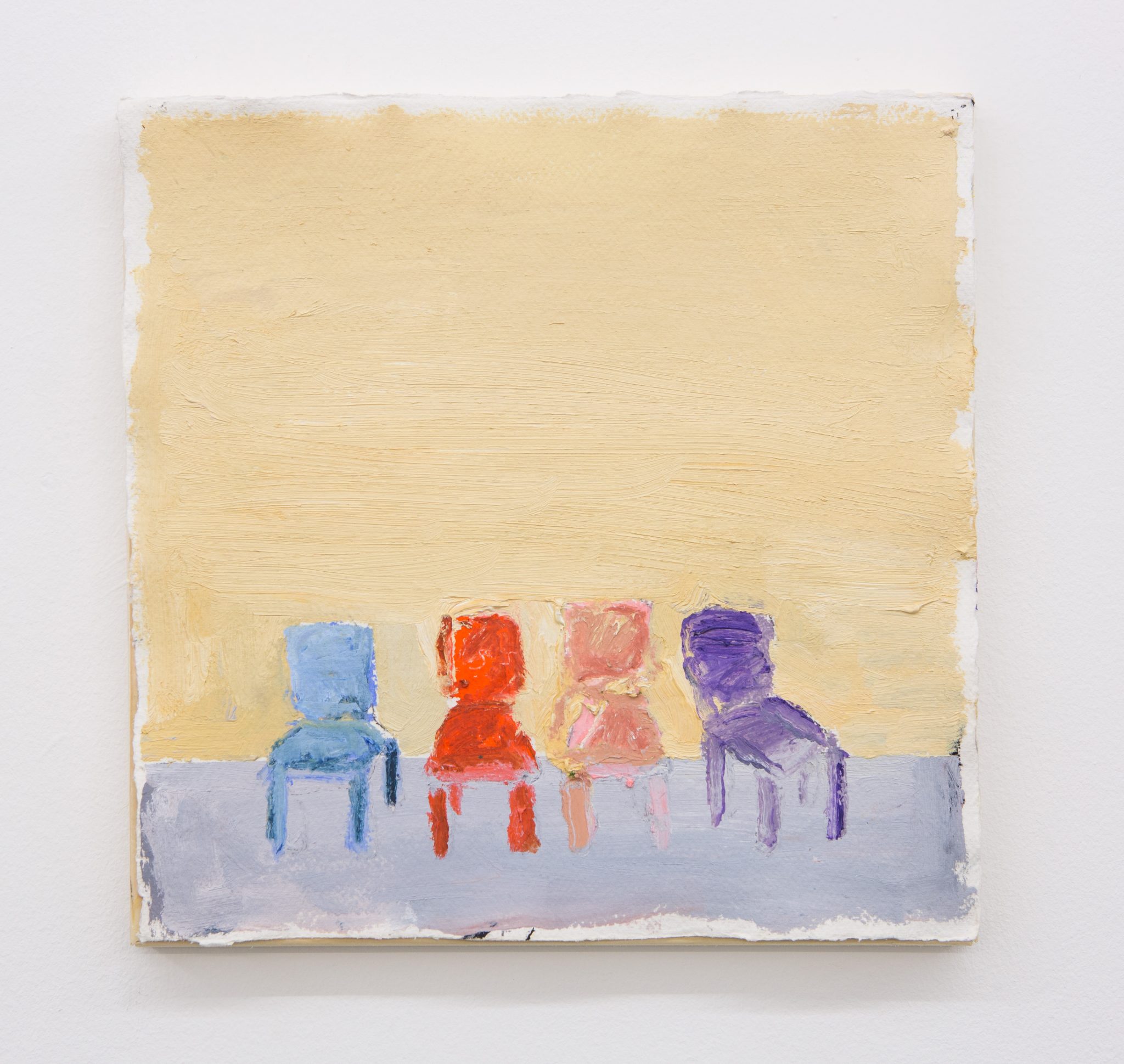In January, Brazilian journalists Chico Felitti and Beatriz Trevisan launched the first episode of their ten-part podcast O Ateliê. It caused an immediate sensation with its tale of an unofficial São Paulo art school that, they claim, slowly morphed into a personality cult centred on the charismatic teacher and his alleged victims, the monied and young who so often feed the country’s gallery system. Yet underlying this particularly strange story are wider questions about exploitation in the art world; class and creative endeavour; the pursuit of a career at any cost; and what happens when the fetishised ideal of the outsider artist morphs into something darker. Here, for the first time, the pair recount their investigation in English.
At 10am on 26 September 2022, three people enter the Cambuci Women’s Defence Police Station, in downtown São Paulo. They are there to file a complaint. One is surprised. “I expected a grey block”, says painter Mirela Cabral, 30, the only one in the group comfortable with her name being published. Instead she found the place to be more like a sports gym, with a curved roof painted green, yellow and purple. Inside, the waiting room was just as cheerful: there is a green plastic seesaw, imitating an alligator; child-sized fire trucks and colourful plastic chairs where children can sit while their mothers, aunts or sisters might be reporting a crime. After half an hour of waiting, Mirela goes to the toilet. She comes back with a tampon in her hand. “It’s free in the bathroom”, she whispers to her friends. She pulls a set of coloured pens from her bag and starts drawing on the padded white square wrapper. Before being called by the clerk, she pictures the police station’s plastic chairs on the soft white background.
Mirela, with the two other women, are there to denounce a man who was her teacher. The three were students at an art school called Ateliê do Centro, run by Rubens Espírito Santo, which occupies a building a few steps from Oscar Niemeyer’s iconic Copan building off the downtown Praça da República. At the Ateliê, they will tell the police, they suffered psychological, physical and sexual violence and financial exploitation. Mirela will tell the police that her thousand days at the art school was like joining a sect.
Mirela’s story, and that of her co-accusers, is documented in our Portuguese-language podcast O Ateliê, which has followed the case since early 2022 when the artist made her allegations public. The founder of Ateliê do Centro says no crime was committed at the school, though he does not deny the scenes described by the twenty former students we interviewed.
Ateliê do Centro has existed for 20 years, with the children of millionaire businessmen, the offspring of some of the greatest art collectors in the world and those of renowned artists passing through its doors. One ‘disciple’, as the pupils were referred to within the school and in its literature, has been going daily for 13 years. While the majority of its students came from affluent families, there were also ones from more modest backgrounds – one interviewee told us that he had two jobs while attending the school, but that the income of one job went straight to Espírito Santo. There were fees for each student, but these varied from individual to individual from R$1000 (£155) to R$3000 (£465) a month, with many students reporting spending a great deal more.
Mirela started at the school in 2016 when she was 24 years old. She had graduated in cinema and was already supporting herself as a TV commercial producer. A friend asked if she knew about the downtown alternative arts school. She didn’t, and went to visit. She came up with the idea of making a documentary about that man, stocky and corpulent, who had a following of young people around him, who styled himself o mestre (the master). But she fell in love with the place, and a few months later she resigned to dedicate herself completely to the classes and practical experiments.
The painter claims that she always wanted to be an artist, but that her decision came at a delicate moment. “I arrived there weighing 48 kilos, I was beginning to have anorexia”, she says. Espírito Santo told her that she would have to spend a week eating inside, using her hands instead of cutlery. “He said it was to get me back in touch with food.” Another former disciple claims that she was considering suicide when she entered the school, and another woman says that she joined the Ateliê after losing a relative and going through a divorce. All claim they were manipulated in a moment of fragility.

The studio’s logic is similar to that of a boarding school. The rules are strict. Every day, Espírito Santo sent an email to the students with a list of tasks. Mirela found some of them strange when she arrived. In a booklet that explains how the Ateliê method works, there are more than fifty commandments. Some of them seem to be linked to professional skills: ‘Rule 1 – every disciple is obliged to speak English, German and French’. Others are more focused on bodily issues than artistic ones: ‘Rule 24 – wash using hot water’, or ‘Rule 42 – female disciples are prohibited from wearing flesh-coloured underwear.’
Within her first days at the school, Mirela claims she was called a “puta burra” (a “dumb bitch”), and other insults. A few weeks later, while she was sitting in a conversation circle, she says Espírito Santo pulled her hair until she fell to the ground. About ten other disciples, who were standing around, watched the scene in silence. “I was hurt, but at the same time, everyone around me was there doing nothing, like it was the most normal thing in the world. So I kind of soaked it up. Because I wanted to be a part of something, you know?” To take part in this course, she paid R$1,500 (£233) a month, plus money for Espírito Santo’s personal expenses, such as cigars and purchases she made from the supermarket for the master’s house.
More aggression occurred, she alleges, as she got deeper and deeper into the curriculum. She took aesthetics classes but then cooked lunch, served at noon sharp, with the other students. She also took on homework assignments, which at Ateliê were called ‘artistic reports’. One was a photo shoot. In it, Mirela appears without a shirt, wearing a blonde wig. Another female disciple also has synthetic bobbed hair and a bare torso. In the photos, the two lick a can of condensed milk and then kiss each other with tongues. Mirela says that there was no physical attraction, and that the photos were a task given by the master. “Does this look like abuse?” she asked at a meeting with her lawyer in September 2022, raising the photos.
In addition to getting legal assistance, Mirela has won the support of former colleagues throughout past year. The first person willing to witness her stories is Dudu Farah, a young businessman who studied with Mirela. Farah confirms Mirela’s account. And he says that he himself was the victim of abuse at the Ateliê. One day, in the middle of lunch, he was asked if he believed in the school rules. He replied yes. “Then Rubens said to a female disciple: ‘So, lower your pants and sit in front of him.’” There’s a crowd present, eating lunch, to which the woman is alleged to have taken her trousers and underwear in front of. “He turned to me and said: ‘Dudu, suck her.’” The artist obeyed. “It was incredibly embarrassing. It lasted three seconds, but I think in my head and her head it must have been like three hours, you know?”
Another artist, who spent years at the school, claims that she witnessed Espírito Santo heat a craft knife over a fire and threaten to mark the skin of a disciple who had questioned him. The student jumped up and said “No I can’t handle that”. The scene was confirmed by six people. And there is evidence of other violence that occurred. Mirela still has the scar on her arm from a cross she says Espírito Santo made on her and at least a dozen students, using a penknife from his collection. There are videos of him cutting a disciple’s arm. As the blade travels through the flesh, she stays still.
Twelve former disciples anonymously described cases of aggression. A young woman claims she left the school after witnessing a scene that she has never been able to forget. She says she saw a new student get thrown to the ground by Espírito Santo. “When I see him, he starts kicking her, he kicks her a lot and she has her little hand on her head, like, protecting herself and crying at the same time and he kicks, kicks, kicks…” The witness says that Espírito Santo then tripped over the student he was attacking, recasting the scene in reverse: “Then he gets up with a limp… And then he sits in the chair and starts to cry. And when he starts to cry, a mood is created. Everyone sat in silence, looking at each other. The master is crying, the master never cries.” According to her, Espírito Santo then said, for the whole group to hear: “Look what you did, man. Me bringing you love, and for an act of love, look what you do to me, man. I broke my wrist for you.” The student, who was still on the floor, was left unassisted, while the other disciples went to help their teacher.

Mirela decided to file a complaint in July 2022, after speaking with the Public Prosecutor’s Office and numerous former disciples. Since then, she has been on a quest to talk to people who have passed through Ateliê, and to make herself available to anyone who wants to join her. On the way, she heard many refusals. People said they were afraid of retaliation, or that they just wanted to forget what they lived through there. But some people were willing to side with her.
Edson Luiz da Costa, 60 years old, is a common figure in Ateliê’s books and handouts. He is listed in publications as one of the school’s employees. Edson spent more than twenty years working as a carpenter and security guard for Espírito Santo. He confirms the reports of former students. “The treatment was the same: pull hair, push them there, ‘go do it’, ‘go girl!’”. The thin, white-haired man says he didn’t interfere with the logic of the place because he didn’t understand what was going on there. “Many times, I would get there and already see people crying before I got to work. I went in at nine o’clock, there was already a guy crying. If you asked me what it was, I wouldn’t know.”
Da Costa saw students being slapped, pushed, kicked and pulled by the hair. And he never understood why the disciples didn’t rebel, but he suspected there was a class issue here. “To be in a place like this you have to have problems with your family, man. Because none of those who go there live in a shack in a favela. They don’t even know what that is.” Until one day, after claiming to have seen Espírito Santo kicking a student on the floor, he had the only confrontation with the then boss. “I went up to him and said: ‘Man, do this with a relative of mine, you would have already been in the ditch for a long time. There would only be two ways out for you. The hole or the garbage bag’.” Edson has not worked for Ateliê for three years. He left shortly after Mirela, who left the school at the end of 2018, was hospitalised with heart inflammation. She claims that she spent all her savings to finance the lifestyle of the master, who lives in a duplex apartment a few blocks from the school.

The life story of Rubens Espírito Santo is nebulous. Before becoming a fixture in São Paulo’s downtown in his overalls, rabbi hat and Gucci aviators, he was an artist in search of recognition. There are more than ten books published about Espírito Santo and his work, all written and funded by the ‘faithful’. And there is an autobiography by Espírito Santo himself. He claims to be the son of a street vendor who also worked as a loan shark in São José dos Campos, in the interior of São Paulo state. He writes that he did not finish high school, and that he moved to São Paulo at the age of 32, when his then wife got a job in the city. She gave an interview in which she said she had met Espírito Santo when she was 15 years old, and he 27, and that she was his student before the two got married, a relationship that was more partnership than romantic love.
In 2002, the couple lived in a studio apartment in Copan block B, the tallest tower in the building designed by Oscar Niemeyer. Block B is a town of 448 small studio apartments, ranging from 17 to 40 square metres. They had the painter Mauricio Adinolfi as a neighbour, who once saw an advertisement on the cork board that hangs in the communal hall, and which read:
ATELIE COPAN
Classes in drawing, painting, sculpture and philosophy of art
RUBENS ESPÍRITO SANTO
Adinolfi looked for the man with the flyer. And they started setting up meetings with half a dozen other artists. It was a conversation circle in which everyone was equal: participants could be sincere in their opinions and passionate in their arguments. “But there was a general desire to help each other”, says the painter. In a matter of months, he and Espírito Santo had grown closer, so much so that they decided to set up a studio together. They found a space on Rua Epitácio Pessoa, realising that they could afford the space if they divided the rent into four: Espírito Santo, Adinolfi and two other friends. “Hence the name Coletivo Ateliê do Centro. But it wasn’t a school, each one also had their own specific space for production.” Each one did their individual work, however much they were side by side. Adinolfi painted and Espírito Santo experimented with sculptures made from scrap metal.
The only time Ateliê do Centro actually felt like a school at that time was during the weekly conversation circle. “We met once a week, organised by Rubens, to discuss works and also to invite other artists, important names such as José Resende and Jac Leirner, to talk about their work. And also to comment on what was being produced there by each one. But we weren’t disciples, it was each one creating, one beside the other”, says Adinolfi.
But in the almost five years that Adinolfi was there, the studio became something else. Espírito Santo became more in demand as a teacher. And the profile of students changed. Instead of artists with some experience, young people started to come. People who had never studied art, or who were graduating from Fundação Armando Alvares Penteado (FAAP), the city’s major art school, and who saw Rubens as a misunderstood genius. “I think that some younger students started to enter and in whom I felt a certain fragility, a certain very quick acceptance of what Rubens said. And there was a certain wonder. A seduction to get the people who can bring money.” Adinolfi broke with the studio before the place became what it is today. He had not heard from Espírito Santo for over ten years, and Adinolfi never witnessed any of the crimes Espírito Santo is accused of.
Espírito Santo may have won the trust of dozens of young people but he never made a name for himself in the art market. “He is not situated in the Brazilian arts, basically. I think he has this group of followers, but he doesn’t have any penetration, he doesn’t work with a gallery”, says the critic Fábio Cypriano. “He could have a role outside the circuit and still be a good artist, but from what I know of him, he is neither in the circuit nor is he a good artist.” Cypriano, editor of Arte!Brasileiros magazine, briefly met Espírito Santo ten years ago. He says the artist’s way of speaking reminded him of Brazil’s populist former president Jair Bolsonaro. “As the arts circuit is very elitist, I think that this type of discourse too, the marginalised discourse, of being “the different one”, is almost like being a Bolsonaro of the arts. He’s the guy who legitimises himself by saying ‘I’m different from everything else out there’. So, he conquers his space that way.”

On 19 December 19, Ateliê’s last school day of the year, Rubens Espírito Santo met the podcast team for an interview lasting more than an hour. He started by saying that he doesn’t teach art. “Here, man, it has very little to do with the arts. I’m much more interested in the rich kid learning to make coffee than learning to draw. So I have very little to do with the art market.”
Upon being informed that more than 20 people accused him of acting violently, he claims that everything that happened at the Ateliê was consensual. “I haven’t done anything that someone over twenty was not in total agreement with. Dude, let’s suppose I propose to you now: ‘Hey, Chico, can I put five earrings in your ear?’. Is this a crime? If you allow it, if you say me that I can, is it a crime?”. Mirela and all the former disciples say they only agreed because there was an asymmetrical power relationship, and they felt embarrassed and coerced into saying yes to what today, after years of consideration, they now recognise as crimes.
Espírito Santo listened to the stories of violence, one by one, read out from a list that ran three pages long. “I would only confirm with you if the person came here to talk about it in person.”
When he hears an objective question, such as “Did you pull the hair of disciples?”, Espírito Santo replies: “I will only say that if the person who is speaking comes here. Do you think I’m stupid, man, to incriminate myself? After the interview, he said he would go on vacation until mid-January. “Absolute rest. Well deserved, man. You don’t know how tense this place is.”

Two days after the premiere of the podcast, Ateliê do Centro closed its doors. Before the third episode aired, the Civil Police carried out a search and seizure warrant at Espírito Santo’s school and apartment. In March, when the podcast reached five million downloads, the school was closed for good.
To date, it is understood that Espírito Santo has not yet given a statement to the Brazilian police, after being summoned on three dates for a hearing. In the first months of 2023, dozens of people who passed through the Ateliê do Centro came forward to back the allegations of violence and financial abuse.
Mirela Cabral is no longer in Brazil. In October 2022, she moved to London, where she completed a three-month artistic residency that culminated in the exhibition Between Handrails at Kupfer project space, showing work linked to her experiences at the school. Among them were three small paintings: each showing little plastic chairs she sketched out the morning she entered the Women’s Defence Police Station to denounce the man she once called her master. The subject, she says, was how she lost the fear of speaking.
Chico Felitti is the winner of the Petrobras and Comunique-se reporting awards. His 2019 book Ricardo & Vânia was a finalist for the Jabuti award in 2020. He was the host of A Mulher da Casa Abandonada and co-host of O Ateliê
Beatriz Trevisan is a reporter, producer of the podcast A Mulher da Casa Abandonada and co-host of O Ateliê
